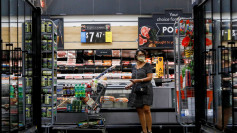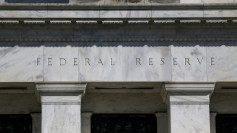Inflation in the United States continued its gradual decline in July, offering a glimmer of relief for consumers and fueling speculation about the Federal Reserve's next move on interest rates. The Labor Department reported Wednesday that the consumer price index (CPI), which measures the average change over time in the prices paid by consumers for goods and services, rose by 0.2% in July. This increase brings the annual inflation rate down to 2.9%, the lowest since March 2021, and slightly below the 3% rate recorded in June.
The report met economists' expectations, with core CPI-which excludes the more volatile categories of food and energy-also rising by 0.2% month-over-month, putting the annual core inflation rate at 3.2%. Both figures indicate a continued easing of price pressures, though some areas, particularly housing, remain stubbornly elevated.
A significant driver of the July inflation figures was a 0.4% increase in shelter costs, which contributed to about 90% of the overall rise in the CPI. While food prices saw a modest 0.2% increase, and energy prices remained flat, certain food categories, like eggs, spiked by 5.5%. Meanwhile, cereals and bakery items declined slightly, showing a 0.5% decrease.
Despite these mixed signals, the easing inflation has led to growing expectations that the Federal Reserve might consider cutting interest rates at its upcoming September meeting. The Fed has been closely monitoring inflation trends as it assesses the appropriate level for its benchmark interest rate, which has been held at a relatively high level to combat rising prices. Futures market pricing, as of Wednesday, indicated an almost even split between expectations for a quarter-point or half-point rate cut in September, with at least a full point reduction expected by the end of 2024.
"Coming down but the sticky areas continue to be sticky," remarked Liz Ann Sonders, chief investment strategist at Charles Schwab. "We have to keep a close eye on both the inflation data as well as the employment data." Sonders' comments underscore the ongoing challenges the Fed faces in its balancing act between curbing inflation and supporting economic growth.
There are crosscurrents in the latest inflation data that suggest price pressures are easing in some areas but remain persistent in others. Notably, shelter costs, which account for a significant portion of the CPI, continue to rise. The shelter index increased by 0.4% in July after a 0.2% rise in June. On an annual basis, shelter inflation is up 5.1%, slightly down from June but still a major contributor to overall inflation.
Another area of concern is food inflation. While the monthly increase in food prices was relatively modest at 0.2%, certain categories remain problematic. For instance, the index for food at home rose by 0.1%, while food away from home increased by 0.2%, indicating that consumers are still feeling the pinch at grocery stores and restaurants.
Energy prices, which have been a volatile component of inflation in recent months, were flat in July after a 2% decline in June. Gas prices, which had been falling, stabilized in July, showing no change from the previous month.
The broader picture for inflation, however, shows a positive trend towards the Federal Reserve's 2% target. A separate report from the Labor Department on Tuesday indicated that producer prices, which are a proxy for wholesale inflation, rose by just 0.1% in July and were up 2.2% year-over-year. This suggests that upstream price pressures are also easing, which could lead to further moderation in consumer prices in the coming months.
Market reaction to the inflation report was mixed. Stock market futures were mildly negative, while Treasury yields edged higher, reflecting investor uncertainty about the Fed's next move.
"The Fed now faces a delicate balancing act," said Nathan Sheets, global chief economist for Citi. "This report gives them the green light for a rate cut in September, but the question remains whether it will be a 25 basis point cut or a more aggressive 50 basis point cut."
Seema Shah, chief global strategist at Principal Asset Management, added, "Today's CPI print removes any lingering inflation obstacles that may have been preventing the Fed from starting the rate-cutting cycle in September. Yet, the number also suggests limited urgency for a 50 basis point cut."






